AnandTech conducted a large-scale and detailed performance test of the Apple A15 Bionic SoC. Unlike numerous tests on the Web, in this case, the source’s experts assessed the capabilities of the new platform not just in games or applications. This makes the test more theoretical, since in practice there can be many nuances, but it allows you to evaluate the achievements of Apple engineers in dry form.
_large.jpg)
To begin with, let’s remember that the A15 Bionic is a single-chip system manufactured using the 5 nm process technology. It contains two high-performance processor cores and four energy-efficient ones. There is also a GPU with five computing units and an improved 16-core NPU.
Tests show that large SoC cores can run at up to 3240 MHz when loaded on one core and up to 3180 MHz when both are loaded. Small cores can reach 2016 MHz anyway. For comparison, the Apple A14 Bionic has similar values of 2998, 2890 and 1823 MHz, respectively.
Now let’s go directly to the tests. The source used the SPEC CPU 2017 software package, at the same time comparing the results of the A15 with the A14, Snapdragon 888 and Exynos 2100. In addition, large and small cores of all platforms were separately tested.
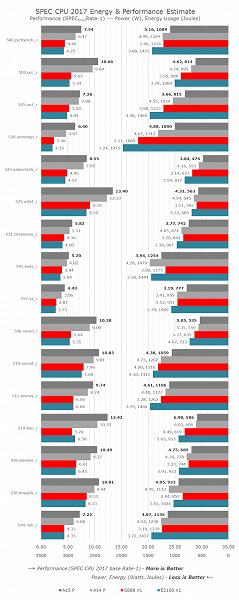
Starting with the high-performance cores, it is clearly seen that they are absolutely always faster than all competitors in the A15 Bionic. Only in a few subtests the difference with the A14 Bionic is minimal. At the same time, top-end solutions from Qualcomm and Samsung sometimes lag by half. At the same time, the large cores of the A15 Bionic are also almost always more energy efficient than competitors’ solutions.
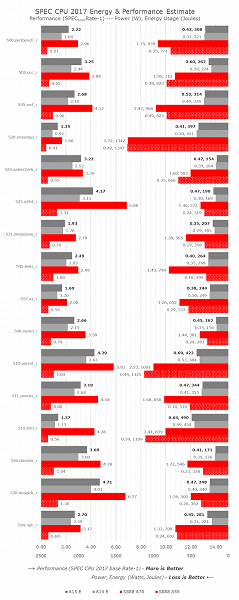
As for the small cores in the A15 Bionic, they look even more interesting relative to the Cortex-A55. The difference in performance can be fivefold or higher, but even more impressive is the fact that in some subtests the energy-efficient A15 Bionic cores are not much weaker than the high-performance Cortex-A78! That said, the difference in energy efficiency is, of course, colossal.
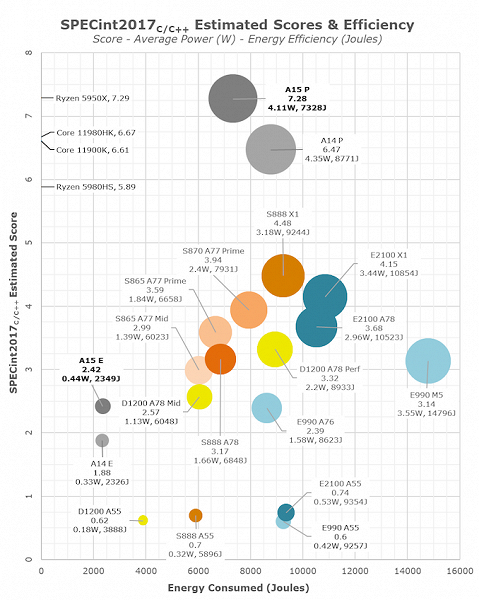
The diagram above shows how much the Apple A15 Bionic outperforms most processors in mobile SoCs. And the performance of the processor in the A15 Bionic in integer computing surpasses not only the SoC M1, but also the top Intel Rocket Lake processors, being on par with the Ryzen 9 5950X.
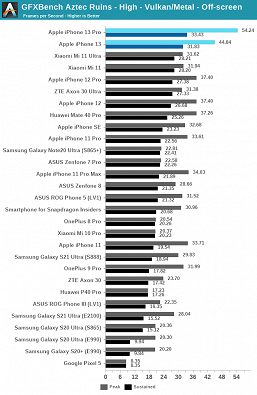
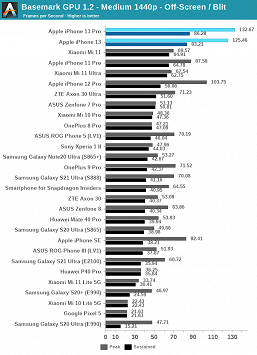
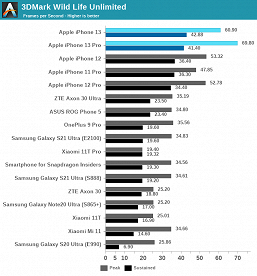
GPU performance is measured using conventional benchmarks. The results are excellent, but here it is worth recalling the behavior of the new iPhones in resource-intensive games, when after a few minutes the screen brightness decreases by 50%, and the performance drops. And this is a good reminder that the tests themselves can sometimes have nothing to do with reality.
The source also confirms significant throttling, citing the thermal design of the new iPhones as one of the worst on the market. In particular, Apple uses a dual system board, and the SoC is located on the inside, which clearly does not contribute to good heat dissipation.
On the other hand, the authors also meticulously approached testing in games. And, for example, in Genshin Impact, where throttling of Apple smartphones is very active, the picture on these same smartphones is much better than on competitors.



As you can see, the detail and rendering distance are much better, and some of the visual effects on Android smartphones are simply not there. True, why all this, if you still can’t play normally, is not very clear.
The bottom line is the A15 Bionic is by far the most productive and energy efficient top-end SoC for smartphones, which sometimes manages to surpass even the very successful SoC M1 in Apple laptops. However, real tests in real conditions and applications sometimes reveal the other side of the coin.
Of course, don’t forget that Apple always releases its smartphones in the fall, while the rest of the market is updating generations at the beginning of the year. And it turns out that now the A15 Bionic is competing with the Snapdragon 888 and Exynos 2100, but in the next few months it will have to fight with the new platforms of Qualcomm and Samsung. However, this does not negate the impressive results of Apple’s decision.
.
Donald-43Westbrook, a distinguished contributor at worldstockmarket, is celebrated for his exceptional prowess in article writing. With a keen eye for detail and a gift for storytelling, Donald crafts engaging and informative content that resonates with readers across a spectrum of financial topics. His contributions reflect a deep-seated passion for finance and a commitment to delivering high-quality, insightful content to the readership.







